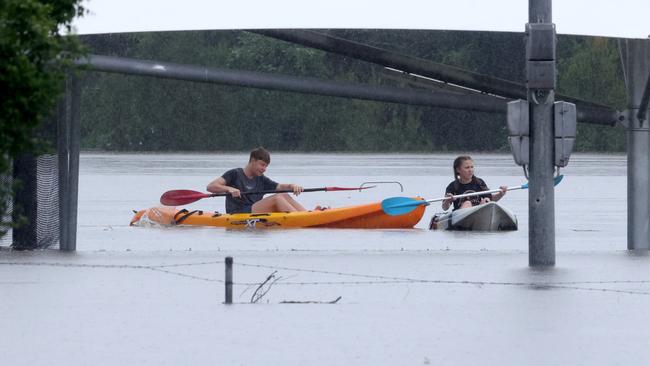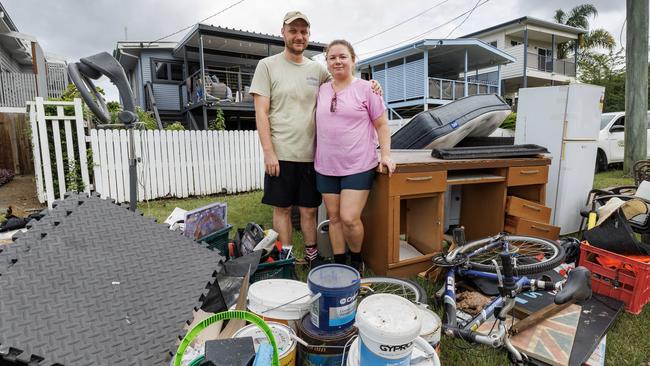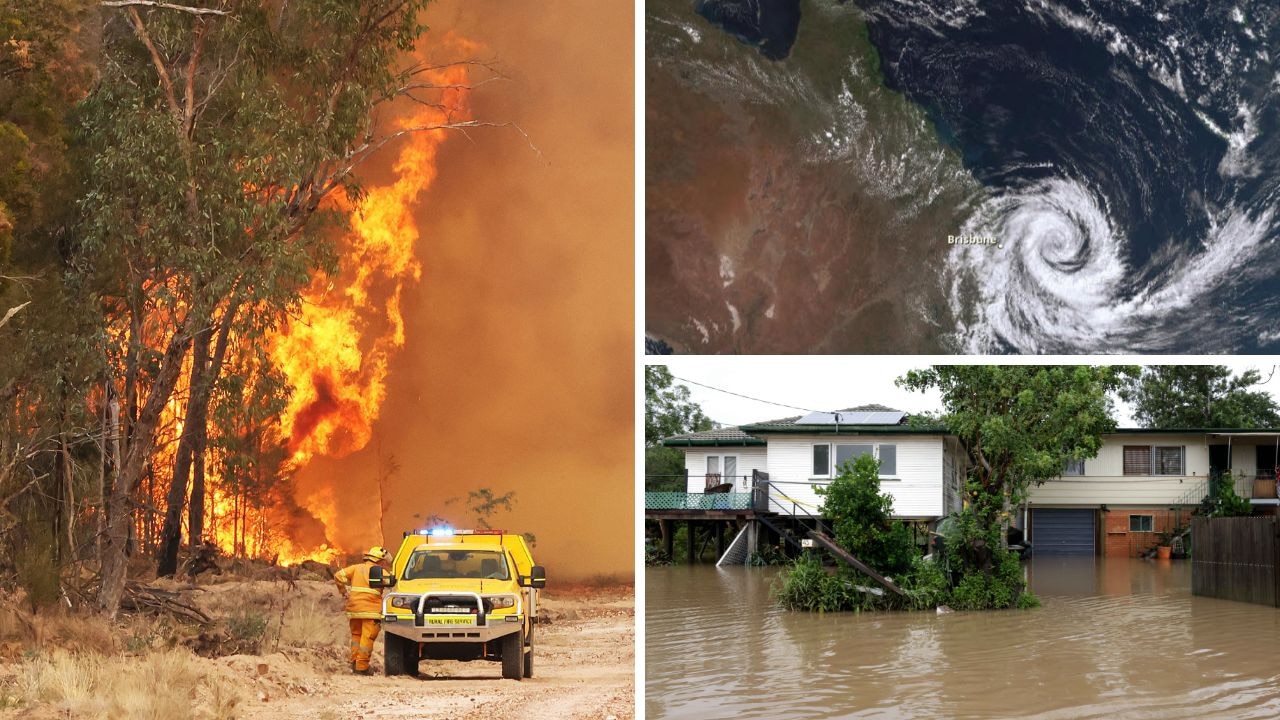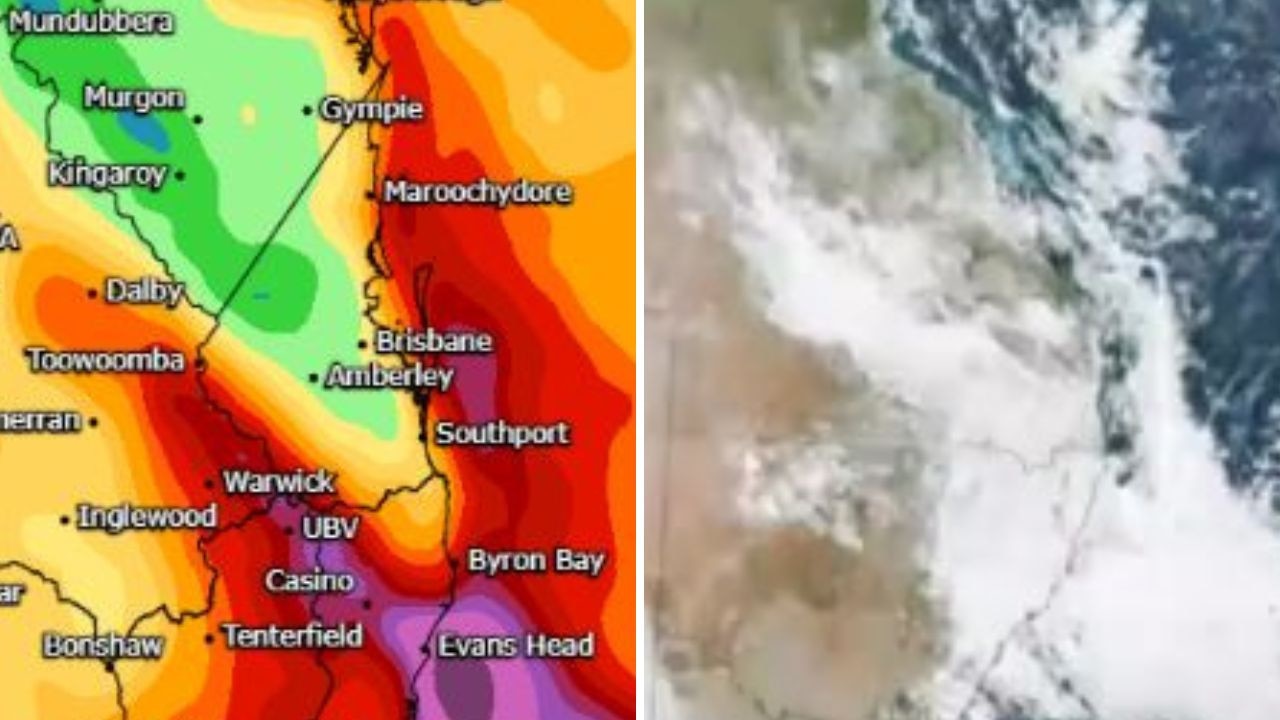Cyclone Alfred statistics reveal merit of previous home buy back schemes
A voluntary home buy back program is among the recommendations of a review into Cyclone Alfred, with the report revealing just how many properties previously bought out would have flooded again.

QLD weather news
Don't miss out on the headlines from QLD weather news. Followed categories will be added to My News.
A voluntary home buy back program should be reinstated after it was revealed nearly three quarters of properties acquired under previous schemes would have flooded again in Cyclone Alfred.
The recommendation is among 12 handed down in a new independent review into TC Alfred and its aftermath, conducted by former Governor and Supreme Court Chief Justice Paul de Jersey for Brisbane City Council.
The review found 8903 properties – 6003 residential and 2900 non-residential – experienced some level of flooding due to Alfred, while an estimated 368 homes had water through them.

It also found hundreds more would have been impacted if they had not been purchased back and turned into vacant land under a past council scheme, and another state and federally-funded program after the 2022 flood event.
Mr de Jersey’s report found that of 405 properties purchased under the two schemes, 72 per cent would have been impacted again by the 2025 event, validating the benefits of such programs.

He found council should asked the state and federal governments to reinstate funding to identify and process properties that could benefit from a buyback or retrofitting scheme.
Lord Mayor Adrian Schrinner has written to the Premier and Prime Minister on the need to reactivate a program, which could consider other impacted properties not previously eligible.
“After the 2022 flood, there was money allocated by the state and federal government. That money has now been exhausted,” Cr Schrinner said in response to Mr de Jersey’s report.
“Let’s get together and do another program … because it did stop hundreds of people flooding that would have otherwise flooded.”
Before Alfred, Brisbane had not experienced a tropical cyclone since 1974.

The report found that on March 10, ex-TC Alfred dumped 275.2mm of rainfall in a 24-hour period, which exceeded the highest daily rainfall total experienced in January 1974.
Strong winds of up to 63km/h were recorded by the Bureau of Meteorology in the Brisbane area and 75km/h at Brisbane Airport which caused trees and powerlines to fall.
There were 56,925 Brisbane customers left without power and more than 527,400 sandbags taken.
Wait times and traffic management at some sandbag locations were noted as a challenge, with people from outside the Brisbane area also accessing them.
A suggestion IDs be required at collection site was rejected by Mr de Jersey.

But the report recommended council set up separate self-serving centres while maintaining supply and storage of pre-filled sandbags.
Other key recommendations were around helping volunteers get personal injury insurance, exploring real-time onsite monitoring of flood and wind speed gauges, increase the number of people subscribed to weather alerts and advocate the state and federal government speed up disaster recovery payments.
Mr de Jersey also reviewed council’s response to the 2022 floods, when he made 37 recommendations.
He said it was reassuring to see most had been implemented before Cyclone Alfred.
Originally published as Cyclone Alfred statistics reveal merit of previous home buy back schemes



